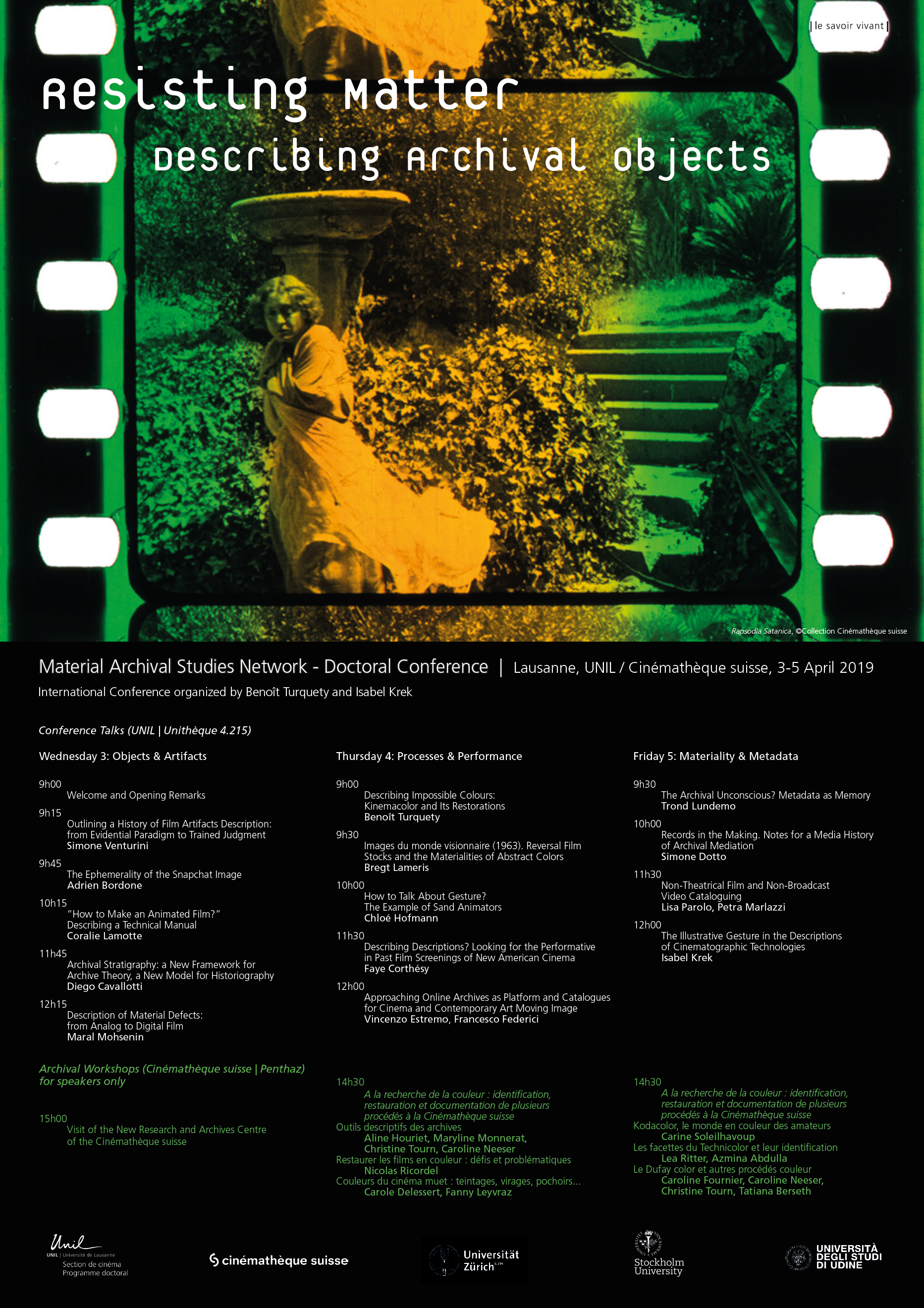2019
Subject
RESISTING MATTER
DESCRIBING ARCHIVAL OBJECTS
Historians as well as archivists are confronted with material objects, whether as paper or film, or as apparatuses. Texts, moving or still images, sounds, then have to be analysed. Description plays a specific role in that process, as it appears first as a precondition of any possible analytical work, but also as its result, insofar as a complete and relevant description of the object can probably be achieved only after its analysis, if at all.
As opposed to interpretation, description presents itself like an objective procedure. But this seemingly objective dimension is precisely the difficulty the historian or archivist has to question, as the unavoidable choices made in the process may become obstacles rather than tools for the present or any future research. Description should emphasize the relevant aspects of the object: but what are they? What vocabulary should be chosen? Where should the description stop? Should every material aspect be noted, even when they don’t seem to be meaningful or interfere with the text itself? Or should certain parts, or aspects, textures, be considered irrelevant?
These problems have long been part of the methodological and epistemological questions raised in the historical disciplines, from ekphrasis in art history and the relations between texts and images, to general historiography and the status of the document. The digital turn in the archives as well as in historical research, and the entry in the era of digital humanities, has transformed, maybe accentuated them. Description may in fact have taken new forms, and divided into two different practices:
- The first is the traditional depiction of a particular document — a work of art for instance.
- The second is the establishment of metadata, more or less directly connected with the document. Based not on analytical prose but on a discrete series of keywords, the database already involves description.
The object thus undergoes several layers of description, each suggesting or constraining the following layers. The database may reflect, in its very architecture, the perspective of its author. But it is also an interface with the corpus or collection, and thus constitutes a filter through which further access may have to pass.
In the case of film archives and film studies, these questions are further complicated by the very nature of the object. Film is in many ways an unstable, elusive object. Multiple versions exist for almost each work, be it for historical, geographical, or linguistic reasons. The experience of the work depends on the conditions of its performance and reception. Restoration processes vary. Moreover, for a vast and ever-growing part of film production’s history, digitization implies that works are accessible only through the prism of remediation.
Material objects resist description. The availability of vast digitized collections and catalogues as well as our own producing of new data and metadata through our research have confronted us with the possibilities, but also with the constraints and limits of these questions. An abstract object emerges from the set of data and keywords that are used for its description. But to what extent does this abstract object adhere to the material one? What are the aspects of our objects that seem to be most crucially escaping our description? How can we deal with this inevitable pragmatic as well as epistemological limit?
Suggested topics:
— Describing the material qualities of archival artefacts, or collections.
— Documents, images, sounds, machines, gestures: specific methodological problems of description.
— Catalogues and the establishing of a corpus. Dealing with varying keywords or cataloguing systems. Studying cataloguing, analysing metadata.
— Studying unstable qualities of objects, or qualities that are sensitive to remediation (colour, contrast, sound, etc.).
— Studying objects that can hardly be described: immaterial culture, performance, noise, etc.
— Subjectivity and description, description and interpretation, description and analysis…
— Description, close reading, and “distant reading”: epistemological implications of dealing with a small or a vast corpus.


